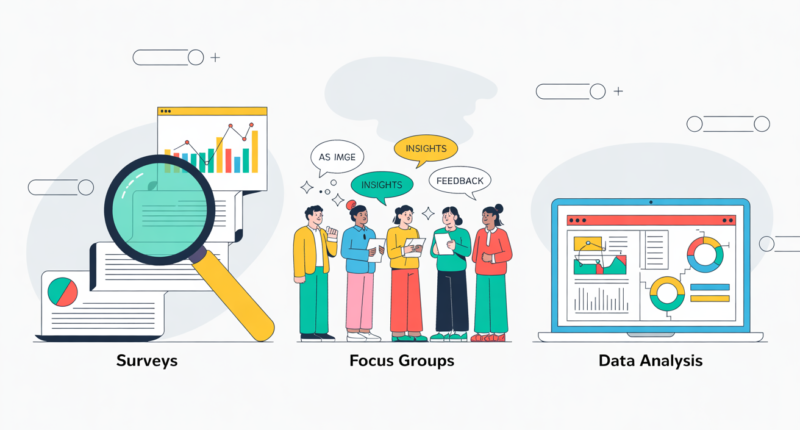Market research is essential for any new startup or small business. It helps you learn about customer needs and trends. In this article, we explain three research methods for tech, local, and ecommerce startups. Each method includes simple steps for beginners. One company boosted sign-ups by testing a new website feature, showing how data can refine your idea.
1. Surveys & Interviews (Market Research)

Surveys let startups gather direct feedback. First, ask customers a set of clear questions. This method is easy for beginners: free online forms or face-to-face chats work well if you keep questions clear and friendly. For example, Virgin Media used on-page surveys to find out why shoppers left items in their cart, and improved their checkout process. In the end, surveys and interviews reveal what people really want.
Steps to Conduct Surveys & Interviews
-
First: Decide what to learn. Think of key questions about your product.
-
Next: Prepare clear questions. Keep each question simple and focused.
-
Then: Choose how to ask. Use free tools (Google Forms) or talk directly to customers.
-
Finally: Review answers. Look for common feedback to guide your next steps.
2. Competitor & Industry Analysis
Next, study your competition and industry data. Competitor analysis means listing other businesses in your field and comparing their products or prices. Asana explains that this reveals your rivals’ strengths and weaknesses. For example, a new cafe can track local coffee shops to see which menu items sell best. This shows customer preferences and gaps your idea can fill. Semrush notes that competitor research can uncover untapped opportunities by identifying missing features in competitorssemrush.com.
Steps to Conduct Competitor Analysis
-
First: Identify competitors. List direct and indirect rivals using online search.
-
Next: Compare offerings. Note products, prices, and strategies from their sites or reviews.
-
Then: Check market data. Use tools (like Google Trends) to see demand and popular features.
-
Finally: Spot gaps in competitors’ offerings and use these insights to refine your idea.
3. Experiments & A/B Testing
Finally, try experiments or A/B tests. This means testing two versions of something and seeing which works better. First, pick one element to test (like a button or headline). Then split your audience so each group sees one version. For example, one startup saw 450% more sign-ups with an interactive demoprefinery.com. These results show the power of data-driven tests.
Steps to Conduct A/B Tests
-
First: Choose an element to test (button, headline, image, etc.).
-
Next: Create two versions and split your audience.
-
Then: Measure results (see which version gets more clicks or sales).
-
Finally: Use the winning version and repeat the test.
In summary, these methods give you data to refine your idea. Using them, any startup can test ideas early and reduce risk. Ultimately, customer data leads to smarter business decisions.









